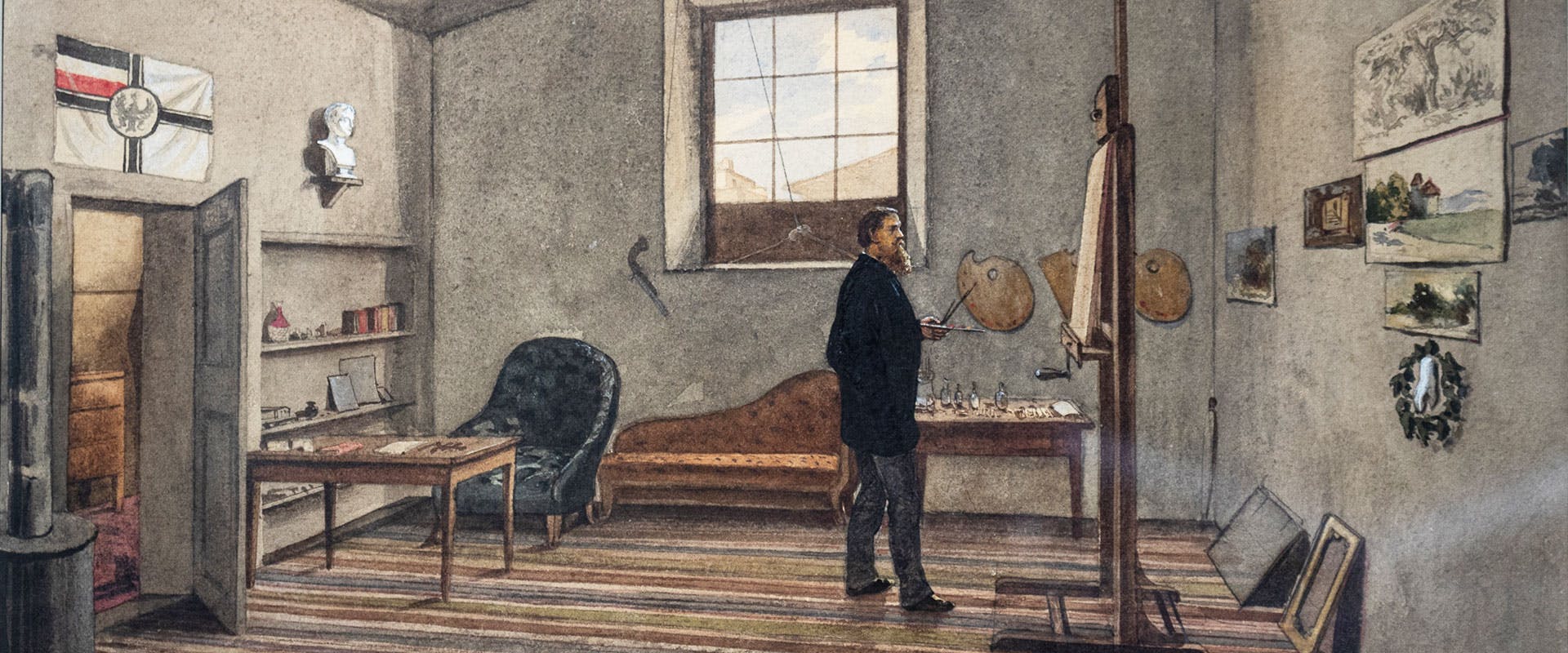Self-portraits on paper by 19th-century Masters
On display at the Uffizi the faces of artists selected from the Department of Prints and Drawings
In the rooms frescoed by Luigi Ademollo on the first floor of the Uffizi, self-portraits on paper by great Masters from the Department of Prints and Drawings' collections undergo a new rotation.
The new arrangements is dedicated to the nineteenth century, a century in which self-awareness and the urgency to spread one's effigy became stronger among artists, who therefore used all the means, especially drawing and engraving.
The exhibition takes account of the different techniques and forms of self-representation, examining the artists who taught at the Academy of Florence or attended it - such as Baldassarre Calamai, who in 1844 portrayed himself in a pencil sketch, or more controversial characters - such as the counterfeiter Egisto Rossi, here represented with three drawings. Among the most significant self-portraits drawn at the end of the century, undoubtedly worth mentioning are the two carried out by the Florentine sculptor Adriano Cecioni (pen) and by the Ticino painter Antonio Ciseri (pencil), who moved to Florence at a very young age.
In art prints, the 19th century is represented by three great names: Domenico Morelli, with a recently purchased rare engraving executed during his stay in Florence in 1852 on view next to another unpublished version of the same subject; Federico Faruffini, with his singular and tormented self-portrait; and Giovanni Fattori, who closes the century with his famous etching on zinc here on display with the print and the engraved matrix. Finally, a tribute to a character who played a significant role in the history and formation of the Uffizi collection of works on paper: Anthony De Witt, whose self-portrait dating back to 1897 is exhibited in a captivating etching corrected with black pencil.
The collection of the Department of Prints and Drawings of the Uffizi is one of the most important graphic collections in the world in terms of artistic value and quantity of the works preserved (around 180,000 sheets). The first systematically ordered nucleus of the collection is due to Cardinal Leopoldo de’ Medici and dates back to the mid-17th century, although some drawings had already entered the Medicean collections in the 16th century thanks to Cosimo I de’ Medici, the first Grand Duke of Tuscany. In addition to being a largely historicized collection, a precious testimony to the Grand Dukes' patronage and not only, the collection, far from being closed, is constantly growing thanks to continuous purchases and donations of old and contemporary works.
